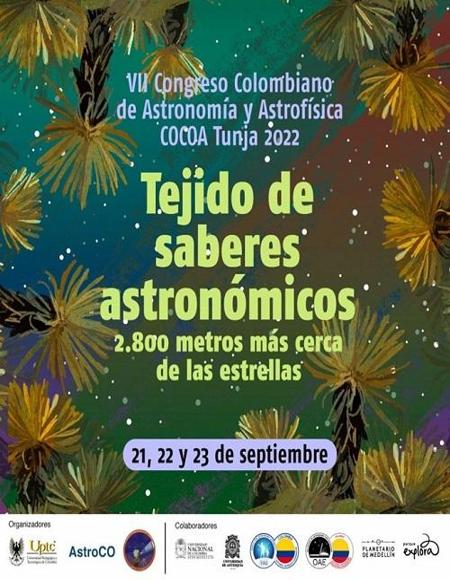Particle distribution method for the homologous collapse of a sphere

Abstract
In this work the adiabatic collapse of a sphere is studied. self-gravitating through a computational simulation
carried out with Gadget-2. This package has a simulation archetype for the homologous collapse of a unit
sphere, which is represented by a series of concentric spherical shells, where the particles are equidistantly
distributed to represent a density ρ ~ r2. Another method has been created based on considering the unit
sphere made up of small spheres inside. The problem comes down to packing the small spheres in the best
possible way. This problem has been solved in solid state physics. For spherical symmetry, the maximum
packing factor is given by an FCC-type Bravais structure. In this work it is shown that the Gadget archetype
is equivalent to a CS structure that has a smaller packing factor. Consequently, the best way to represent a
gas sphere computationally is by means of an FCC distribution.
Keywords
Homologous collapse, Molecular cloud, Gadget-2
References
- Josh Barnes and Piet Hut. A hierarchical o (n log n) force-calculation algorithm. nature, 324(6096): 446–449, 1986. DOI: https://doi.org/10.1038/324446a0
- William Brass, Peter. Moser and János Pach. Research problems in discrete geometry. Springer Science & Business Media, 2006.
- B. Czaja. Master degree in astronomy. Hydrodinamic simulations of star formation from molecular could collisions. Master’s thesis, Department of physics and astronomy, 2016.
- S. Diehl, G. Rockefeller, C. L. Fryer, D. Riethmiller, and T. S. Statler. Generating Optimal Initial Conditions for Smoothed Particle Hydrodynamics Simulations. Publications of the Astronomical Society of Australia, 32:e048, December 2015.doi: 10.1017/pasa.2015.50. DOI: https://doi.org/10.1017/pasa.2015.50
- August E. Evrard. Beyond n-body: 3d cosmological gas dynamics. Monthly Notices of the Royal Astronomical Society, 235, 911-934., 1988. DOI: https://doi.org/10.1093/mnras/235.3.911
- Lars Hernquist and Neal Katz. TREESPH: A Unification of SPH with the Hierarchical Tree Method. Astrophysical Journal Supplement Series, 70:419, June 1989. doi: 0.1086/191344. DOI: https://doi.org/10.1086/191344
- James Hopwood Jeans. I. the stability of a spherical nebula. Philosophical Transactions of the Royal Society of London. Series A, Containing Papers of a Mathematical or Physical Character, 199 (312-320):1–53, 1902. DOI: https://doi.org/10.1098/rsta.1902.0012
- Ali Katanforoush and Mehrdad Shahshahani. Distributing points on the sphere, i. Experimental Mathematics, 12(2):199–209, 2003. DOI: https://doi.org/10.1080/10586458.2003.10504492
- Charles Kittel. Introduction to solid state physics. John Wiley & Sons, 8th edition, 2005.
- Daniel J. Price. Smoothed particle hydrodynamics and magnetohydrodynamics. Journal of Computational Physics, 231(3):759–794, 2012. DOI: https://doi.org/10.1016/j.jcp.2010.12.011
- Cody Raskin and J. Michael Owen. Rapid optimal sph particle distributions in spherical geometries for creating astrophysical initial conditions. The Astrophysical Journal, 820(2):102, 2016. DOI: https://doi.org/10.3847/0004-637X/820/2/102
- Edward B. Saff and Amo BJ Kuijlaars. Distributing many points on a sphere. The mathematical intelligencer, 19(1):5–11, 1997. DOI: https://doi.org/10.1007/BF03024331
- Volker Springel. Gadget: a code for collisionless and gasdynamical cosmological simulations. New Astronomy, 2001. DOI: https://doi.org/10.1016/S1384-1076(01)00042-2
- Volker Springel. The cosmological simulation code gadget-2. Monthly notices of the royal astronomical society, 364(4):1105–1134, 2005. DOI: https://doi.org/10.1111/j.1365-2966.2005.09655.x
- Volker Springel. Smoothed particle hydrodynamics in astrophysics. Annual Review of Astronomy and Astrophysics, 48:391–430, 2010. DOI: https://doi.org/10.1146/annurev-astro-081309-130914
- Steven W. Stahler and Francesco Palla. The formation of stars. John Wiley & Sons, 2008.
- Pieter Merkus Lambertus Tammes. On the origin of number and arrangement of the places of exit on the surface of pollen-grains. Recueil des travaux botaniques néerlandais, 27(1):1–84, 1930.